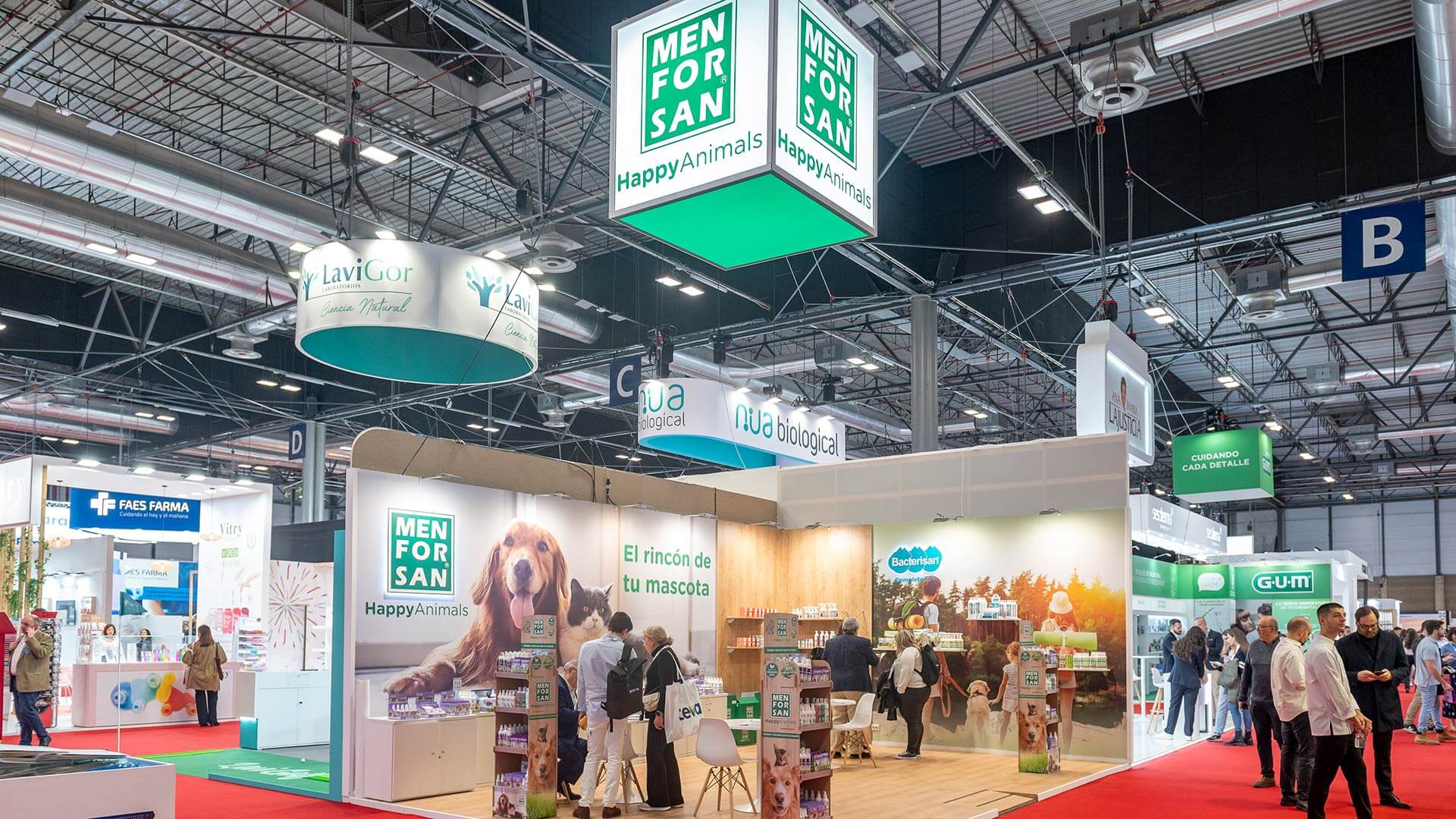Creating a stand for an exhibition, especially in the context of experiential marketing at corporate events, requires careful planning and attention to detail at every stage, from design to building. Each phase is important to ensure success and deliver a memorable experience for all participants.
The stand is more than just a physical space, it is the visible face of your business and an opportunity to convey your company's values and demonstrate your commitment to issues such as sustainability and/or quality. A well-designed and executed stand can position your company as a leader in your industry, attract new customers, consolidate business relationships and strengthen your brand.
WHAT IS A STAND FOR?
A stand is a key contact and relationship tool with your target. For it to be effective, it is important that the objectives of the stand are well defined and aligned with your company's commercial strategy and values.
KEY ELEMENTS OF A SUCCESSFUL STAND
When building a stand, there are several key aspects to take into account. An attractive conceptual design, the right choice of materials, good planning of stand set-up and operation, and an effective activation strategy are essential for success.
Conceptual design
The first element to take into account in the building of a stand is to start with the identification of the target audience and the definition of the objectives of the stand. It is important to consider who you want to attract and what you want to achieve by being present at the exhibition: attract new customers, strengthen existing relationships, open up new target markets...
The design should reflect the brand identity, using colours, logos and key messages to resonate with the target audience and should be aligned with the theme of the exhibition in which we are present.
The layout of the space should facilitate the flow of visitors, creating accessible areas and highlighting points of interest.
- Stand location: To maximise visibility, it is advisable to reserve a space in a high-traffic area, ideally near the main entrance or at a key intersection. This strategic location will attract more visitors and capture their attention from the start of the event. Knowing the exact location in advance will help us to design a stand that perfectly fits the available space, optimising the layout or lighting.
- Customised design: A customised design is essential for the stand to reflect the brand and highlight the business. Creating a customised stand allows you to add specific displays, demonstration spaces, interactive areas and graphics.
Materials & Building
The choice of materials is crucial to ensure that the design and construction of event stands is interesting and functional. Attractive and durable materials such as wood, metal and glass help the image you want to project of the company. It is advisable to hire specialised companies that know the step-by-step design and assembly of stands for exhibitions and events to guarantee quality and compliance with deadlines. If your positioning is aligned with sustainability, it is important that in the choice of materials you take into account using those that are more environmentally friendly due to their origin, their recyclability or their reuse options.
Logistics and Assembly
Logistics include the safe and efficient transport of the stand and its set-up at the venue. Coordinating with the exhibition organisers and venue is essential to comply with regulations and schedules. Testing and adjusting before the opening ensures that everything runs smoothly. A very important issue regarding the set-up is to take into account the management of the waste generated by the stand set-up. It is necessary to foresee what kind of waste will be generated and to manage it efficiently.
TIPS TO IMPROVE THE EFFECTIVENESS OF THE STAND
- Customised design: A customised design that reflects the brand and makes the business stand out is essential. Experimenting with materials, shapes and adapting them to the brand image is a guarantee of success.
- Key elements: Lighting should highlight products and create a welcoming atmosphere. Graphics and signage should be clear and attractive, facilitating information. The incorporation of interactive technology, such as touch screens and multimedia presentations, can capture the attention of visitors.
- Promotions and giveaways: Offering promotions and giveaways attracts visitors by generating traffic to the stand area. Branded merchandising, or offering attractive catering can be tools that help to energise the space.
- Staff training: Staff should be well trained to interact with visitors, providing relevant information and creating a positive impression.
- Energisers: Live demonstrations and interactive activities attract and hold the attention of the public, offering a dynamic experience.
Evaluation
After the event, it is important to evaluate the success of the stand through surveys, analysis of visits and sales generated. Feedback should be used to improve future participation. Following up on the leads and business opportunities generated is crucial to maximise the benefits of the event.
With these requirements and tips, you can ensure that your exhibition stand will not only attract more visitors, but will also reinforce your company's image and generate new business opportunities.






